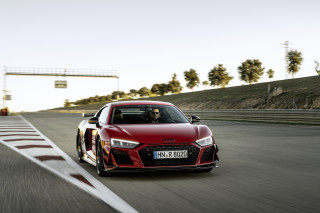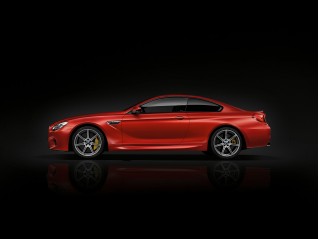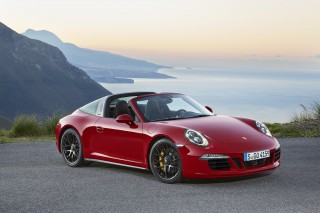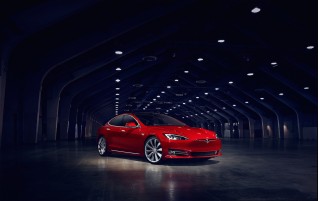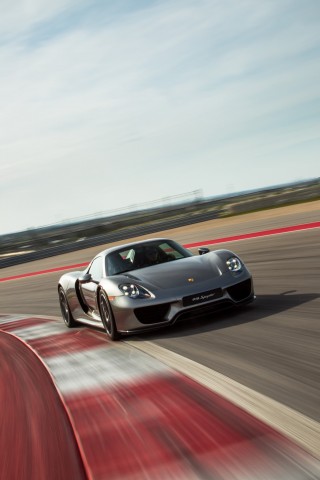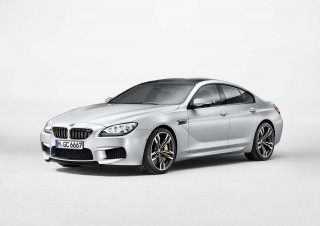Likes
- Stunning coupe looks
- Remarkable fuel efficiency
- Quiet all-electric running in town
- Sport Mode's electric boost
Dislikes
- Pricey for the performance
- Interior slightly plain
- Does the plug-in part matter?
- Low tax credit for small battery
Buying tip
The 2016 BMW i8 blends a stunning coupe design with a slew of advanced technology underneath; the plug-in hybrid powertrain, and its corresponding efficiency, may be all but irrelevant.
The 2016 BMW i8 attracts attention for its exterior looks, but the technical wizardry in the plug-in hybrid powertrain should turn heads just the same. It could be powered by coal and ground-up baby seals and it'd still be viewed with awe and admiration by crowds gathered around to watch its "bird wing" side doors pivot up and out of the way. Nearly anyone feels like a celebrity when they're behind the wheel of an i8.
The i8's running gear is truly unique. When was the last time a stunning two-door came with a charge cord to plug it into a wall outlet? And a three-cylinder engine? The classic design cues are merely there to point out that it's possible to blend energy efficiency with both style and performance. And that makes the i8 a car unlike any other.
Its mission is to respond to what BMW says is the desire to enter "a new era of sustainable performance." And its highest-tech features may be its construction, with a body shell made of carbon-fiber reinforced plastic that attaches to an aluminum chassis that absorbs crash energy and carries the powertrain. Then there's the battery pack, the electric motor, and the three-cylinder engine too.
As a design, the i8 includes a number of elements of "normal" BMWs, including twin-kidney grilles at the front. But much of its style is owed to elements that are unique to the BMW "i" sub-brand. These include startling wing-like fins at the rear, blue trim accents, and a groove between the upper and lower rear bodywork. Like the i3, its smaller city-car counterpart in the "i" lineup, the i8 has unusually tall wheels and tires (20-inch wheels are standard) to reduce aerodynamic drag.
The interior is a blend of ultra-modern lines with some recognizable BMW bits from other cars. But they're executed in unusual materials that include reclaimed wood veneers and fabrics with recycled fibers. Both front passengers sit low, with a floating pod of instruments in front of the driver; the tall tunnel for the i8's battery pack forms a large divider. In our testing, we've been impressed with the highly contoured and ultra lightweight seats, although we've not yet taken an i8 on an extended drive to see if that holds true over longer distances.
Then there's the powertrain, really a pair of separate power sources, one per axle. At the rear, a high-output turbocharged 3-cylinder gas engine powers both rear wheels, while an electric motor motivates the front pair, fed by the liquid-cooled lithium-ion battery pack that boasts a usable energy capacity of around 5 kilowatt-hours. Because it's located between the seats, the entire car maintains a low, sleek profile.
The combination of engine and motor provide the i8 with split personalities: it can run only on electricity, as a zippy hybrid, or with both powertrains teamed together as a genuine sports car. It is a "through-the-road" hybrid; each propulsion mode is linked together via software, but they're not mechanically connected even whten they are working together.
The i8 was the first BMW to use the company's latest 1.5-liter turbo 3-cylinder engine, rated at 228 horsepower and 236 pound-feet of torque, powering the rear wheels through a 6-speed automatic transmission. The same engine is now found in a lower state of tune in the latest Mini Cooper line. The electric motor up front is rated at 96 kilowatts (131 hp) and 184 lb-ft of torque; it's used for electric-only driving at speeds up to 75 mph.
The electric range of the i8 is rated at 15 miles by the EPA, though BMW says the Max E-Mode setting can give up to 22 miles. The motor also offers a sort of power boost to complement the engine torque, when the car is running in "Sport" mode. In addition to three driving modes—Max E-Mode, Comfort, and Sport—the first two can be driven using the EcoPro function, which increase efficiency and range by capping acceleration and other energy uses. The default Comfort mode uses each powertrain or both in a more efficient manner, running essentially as a hybrid once the battery is depleted.
The EPA rates the i8's total combined range between the gas tank and a fully charged battery at 330 miles. And it gives the coupe a rating of 76 MPGe when running electrically. (MPGe, or miles per gallon equivalent, measures the distance a car can travel on the amount of energy contained in one gallon of gasoline.) When running as a gasoline hybrid, the BMW i8 gets a fuel efficiency rating of 28 mpg—decent for a high-performance sport coupe.
The BMW i8 starts at more than $140,000, putting it into a rarefied sector of pricey two-seat performance cars. Options can add another $10,000 or more, depending on how heavy-handed the buyer is on the specifications sheet. For 2016, BMW has received federal approval to offer the world's first laser headlights as an optional replacement for the standard LED headlights. They're stunningly good, giving as close to a daylight spread of distance vision as we've ever seen in a car.
It's entirely unclear whether more than a handful of six-figures sport coupe buyers care about reducing fuel consumption and sustainability. The innovative materials, advanced tech, and light weight of the BMW i8 have already made it a high-tech icon. It's more of a sports car that's comfortable as a touring car than an all-out track racer. Which is not to say that BMW isn't considering higher-performance models down the road. Meanwhile, we anticipate that the company will have no problem selling every one they build.
2016 BMW i8 Styling
The 2016 BMW i8 is such a stunner that we think it could run on coal and people would still buy it; it's a perfect 10.
Even in its third model year, the 2016 BMW i8 can stop traffic and make random onlookers assume you're a celebrity. It has a classic coupe shape with a low, fastback profile with short overhangs that's turned up to 11 by its swing-up doors, which hinge from the windshield's pillar and pivot upwards. They're known to Germans as flugeltur, or "wing doors." And they do provide something ofa raptor shape, like a vehicle that's ready to swoop from the sky and nab a mammal or two for lunch.
Its design is largely based on the styling language developed for BMW's "i" sub-brand. The i8 wraps tightly around its tall 20-inch alloy wheels, and the sculpting of its shape emphasizes its horizontal lines—despite a relatively high tail end with a slab-sided panel behind the rear wheel arch. It's all in the interest of lowering aerodynamic drag, the biggest energy consumer above 30 mph. BMW states the i8's drag coefficient is just 0.26, which is certainly sleek but not quite as miserly as that of the longer Tesla Model S.
Approaching the i8, you first see its colors: the arresting blue accents that highlight the twin-kidney grille openings. Where the i8 isn't painted in its body color, it's covered in a shiny piano black shade. While that may sound visually cacophonous with those bright blue accents, it all hangs together remarkably well—and ensures you'll never mistake the i8 for any other car.
On the shape itself, you'll notice the groove between its upper and lower body panels becomes apparent, as the car's waistline sweeps back across the upper rear fenders. A unique set of narrow tail fins make their way along the roof line to the rearmost edges of the deck lid, which curves over them to create an open tunnel. The arching aero elements of the door sill and rear bumper make their own contribution to the taut shape.
The BMW i8's interior comes across rather less avant-garde than the i3, its smaller silbing. It offers a predictable dashboard layout, sans the i3's raw fiber-impregnated plastic. Compared to the nearly Scandinavian austerity offered by the i3, the i8 comes across more conventional and typical BMW.
But the i8 extends its blue accents to the LED ambient lighting and a delightful (but optional) set of bright blue seat belts. Its floating center screen and a layered dash design nod to the i3, but won't raise eyebrows for buyers of the pricier conventional BMWs either. Our test car's upholstery was a nice mix between ivory and black leather, with liberal use of matte silver accents to highlight character lines that sweep dramatically through the dashboard.Soft touch plastics throughout deliver the expected upmarket feel.
The i8's shape is distinctive and fresh and more coherent than its intersecting lines might suggest. Its design themes come off rather differently depending on exterior color, meaning it's almost as if there are several different personalities available at the tick of an option box on the ordering form.
2016 BMW i8 Performance
The 2016 BMW i8 redefines performance, though it's hardly the fastest coupe; instead, it's all-electric (for a while) and always efficient.
The 2016 BMW i8 sports a type of powertrain that's only used by one other vehicle: the now-discontinued Porsche 918 Spyder (at far above the BMW's cost). But the i8 is more of a touring coupe than an a track car designed for all-out speed. It's meant to strike a balance between sports car performance and eco-friendly efficiency. Although its price puts it up against more conventional rivals like Audi's R8 and Porsche's 911, the BMW is a very different kind of car.
From the rear, it uses a 228-horsepower turbo 1.5-liter 3-cylinder gas engine, putting out 236 lb-ft of torque via a 6-speed automatic gearbox, to motivate the rear wheels. Then, separately up front, a large 96-kilowatt (129-hp) electric motor tucks in between the i8's wheels, powering them via a two-speed transmission. Energy comes courtesy of a lithium-ion battery pack that has about 5 kwh of usable capacity. It's mounted in what would traditionally be the driveline tunnel that runs between the passengers.
Drivers of the i8 are faced with more choices than those of conventional sports coupes. The car can be run on electricty alone via its front wheels.. Or it can be driven as a hybrid, using both powertrains and alternating as necessary. Or, its Sport mode provides high-performance all-wheel-drive—with each of the trio of methods using software programming to keep everything operating harmoniously. BMW quotes a combined power output of 357 hp when both of thepowertrains are running at their maximum output, giving a 0-to-60-mph sprint of a mere 4.2 seconds.
To start off only on electric power, the "Max e-Mode" setting keeps the i8 running on its battery alone up to freeways speeds of 75 mph—although a stiff detent in the accelerator pedal switches the engine on to deliver extra power for emergency situations. If that occurs, the driver must select "Max E-Mode" again to resume all-electric running. Regenerative braking comes on stronger in E-Mode than it does in hybrid mode, but drivers quickly learn to coast down to a stop using the friction brakes late in the braking process.
When the battery is depleted—the EPA rates it at 15 miles of range—the i8 segues seamlessly out of "Max e-Mode" and into "Comfort" mode. Here, it is fundamentally a hybrid, starting off under only electric power then firing the gas engine when additional motivation is required. It will do up to as much as 40 mph before that happens, depending on load. But this hybrid mode only recharges the battery to about 1.3 kwh (enough for hybrid use) that is only a fraction of its full capacity when it's been plugged in to fully recharge.
Then there's "Sport" mode. If the driver selects that at any time, flooring the accelerator turns on the i8's electric motor—accompanied by a "Boost" notice in the tach—to give the car that 4.2-second acceleration to 60 mph. Among other differences, the car recharges the battery pack using engines overrun well above the restrictive hybrid levels seen in "Normal" mode, meaning that when the pack is recharged fully, the i8 delivers sustained fully electric power well beyond what it sees during normal use.
Sport mode is engaged by pulling the gear lever toward the left. Immediately, it changes the car's personality enormously. A tachometer has replaced the power meter, the instrument cluster takes on a red glow, and the powertrain controlling software is considerably more aggressive. And it lets the i8 approach the tenacity that its wild looks promise. Especially at higher velocities, however, it's far from a high-end Porsche 911 or Audi R8. Above 75 mph in this mode, the two-speed transmission paired to the electric motor slips into the higher of its two gears to deliver torque all the way up to the car's top speed—around 135 mph, possibly higher.
Managing all of the potential driving condition, power demand, sensor input, and braking combinations is a highly complex task. But despite all this complexity, the i8 delivers neutral road-holding and precise electirc power-assisted steering with reasonably well simulated feedback passed through the thick wheel.
Driven with gust, the i8 held pace on the twisty canyon roads we encountered above Los Angeles—though a Ferrari, McLaren, or Porsche could quickly leave it in the dust. In Sport mode, the ride remains compliant and lets in only a hint of bobbing over irregular pavement.
The BMW i8 really blends three different cars into one, all of them providing its eye-catching looks. On shorter urban trips, it's a clam, quiet, smooth electric car that can effortlessly keep pace with typical traffic. On longer or more varied trips, it's a seamless and silent hybrid that will likely deliver commendable fuel efficiency. And when excellent roads with limited traffic are the order of the day, the i8 can become a more aggressive sports car.
Understanding the i8's distinctively different personalities lets drivers effectively use them to balance sportiness and energy efficiency. The BMW i8 isn't straight up competition for most of its rivals. Whether or not its green credentials really matter is open to debate since the i8's styling may very well be its biggest selling point for many.
2016 BMW i8 Comfort & Quality
The 2016 BMW i8 is comfortable for two, stylish, and well-assembled—but the rear seats really don't fit anyone.
The 2016 BMW i8 sports coupe may have four nominal seats, but the rear two are all but useless. They'll hold a coat, or maybe the custom-designed Louis Vuitton bags intended specifically to fit into their limited dimensions (you'll have to prove you own an i8 before LV will sell them to you, however). Just don't plan on using them for live humans.
Since the i8 looks like a two-seater, however, there's no harm done. Even for those front seats, though, entering the car will take some training. The seat's bottom cushion is about half a foot below the door sill and the driver also has to negotiate around the steering wheel. Ingress and egress is easier with regular practice, but it's still easy to scuff the dashboard's outer edge.
Up front, the occupants sit low in seats that are contoured heavily. They're separated by a tall center tunnel that contains the car's battery pack. After a few hours of driving, we found the seats sufficiently supportive.
The interior features relatively minimal storage room, and the outlandish "wing doors" lack storage bins. That leaves the rear seats for interior storage. A pair of front and rear cargo compartments offer decent soft luggage storage, but suffice to say this won't be a good Home Depot errand runner.
With the gasoline engine mounted aft of the seats, mechanical noises from beyond the bulkhead aren't as notable here as in front-engine cars. The i8's 3-cylinder delivers a distinctive, uneven gurglingat idle that feels more like a motorboat engine. Under acceleration, that rises to a pleasing howl, but it's not the car's native sound. Instead, BMW has integrated a sound generation chip that adds freuqencies based on the engine's speed and several other factors.
A nice feature is the i8's audible "honk" through its exhaust system on upshifts prior to when the engine speed lowers to match its new, higher gear. In electric-only mode, there's a spaceship-like whine from the electronics that's audible at higher speeds and there is considerable tire rumble that more pronounced with the engine off.
The i8 rides firmly and even jiggly over some surfaces, although it is ultimately well controlled.
2016 BMW i8 Safety
The 2016 BMW i8 hasn't been crash-tested, and may not be, but it comes with a full array of safety features.
Neither federal regulators nor the IIHS have crash-tested the 2016 BMW i8. And given the high price and low sales volume, it may not ever be rated by either body. Nor can we draw assumptions from the test performance of the BMW i3 electric car—which uses similar construction to the sportier i8. Both cars have a body shell of carbon-fiber-reinforced plastic attached to an aluminum platform that holds both the front and rear crash structures and the running gear.
BMW is confident that the battery's uniquely central location squeezed between the axles gives it maxium protection in any wreck. The automaker says it has simulated crash tests and practiced them in real world-like situations. As expected, it features federally mandated safety features like six airbags, stability control, and anti-lock brakes.
This year, the Department of Transportation has certified BMW's laser high-beam headlamps, making them the first sold on this market. They feature automatic high beams that senses oncoming traffic and they provide a brilliantly clear and almost daylight-like light pool that betters just about any car we've driven. They're an extra cost option over the standard LEDs.
2016 BMW i8 Features
The 2016 BMW i8 offers a full array of modern features, including this year the astounding laser headlights.
The 2016 BMW i8 continues largely unchanged from its two previous model years, with only the addition of laser headlights as an option to replace the standard LED headlamps. The laser lamps are stunning in operation, providing as close an approximation to clear white daylight in front of the car as anything we've seen. They come with auto-dimming that may be able to sense oncoming cars even before the driver; the i8 is the first car in the world to be sold with them.
The standard 20-inch alloy wheels are 7.8 inches wide in front and 8.5 inches at the rear, with tall 215/45 and 245/40 tires. There's a full suite of infotainment options, including a navigation system, satellite radio, and of course the smartphone app for checking the status of the i8 remotely. The color touchscreen display is 8.8 inches, and the i8 has the usual BMW iDrive system with added functions for its unusual powertrain. The standard audio is an 11-speaker, 360-watt Harman Kardon surround-sound system.
Rather than trim levels, the i8 comes in three "Worlds" (like its sibling the i3). Mega World is the base car, using recycled and contrasting materials for parts of its interior. BMW defines Giga World as "elegant sportiness" with its white and black accents that deliver a "modern" feel. And Tera World includes leather and those blue accents, including the bright blue-dyed seat belts we liked so much.
An unusual third-party option is luggage crafted by Louis Vuitton from the same carbon fiber used in the i8's body shell designed specifically to fit into the i8's seats and luggage compartments. The luggage can be ordered only through select LV stores, but you are required to present proof of i8 ownership to buy it.
The i8's base price comes in at slightly over $140,000, including a mandatory destination charge. Add in another $1,000 if you want a BMW-designed wall-mounted charging station rated at 7.2-kilowatt hours, although the i8 can charge on any 240-volt Level 2 station.
2016 BMW i8 Fuel Economy
The 2016 BMW i8 can run about 15 miles on battery power, and is the most efficient sports coupe you can buy.
The 2016 BMW i8 is rated at 15 miles of electric range, 28 miles per gallon when running in hybrid mode, and 76 MPGe when running electrically. That rating, which stands for "Miles Per Gallon Equivalent," refers to the distance the car can travel electrically on the amount of energy contained in one gallon of gasoline.
Its fuel economy is decent for a high-performance sport coupe, though it's lower than comparable ratings for more pedestrian plug-in hybrid sedans and hatchbacks. The total range between the electric and gasoline powertrains is rated at 330 miles, and premium gasoline is recommended for its 1.5-liter three-cylinder engine.
A separate EcoPro function improves the vehicle's range and efficiency by capping energy uses like acceleration. We saw a 14 mile range with the battery charged to more than 80 percent.
It's the looks that make the i8 truly stand out, and onookers' reactions when the outlandish car pulls into charging stations range from disbelief to complete awe.






































































































